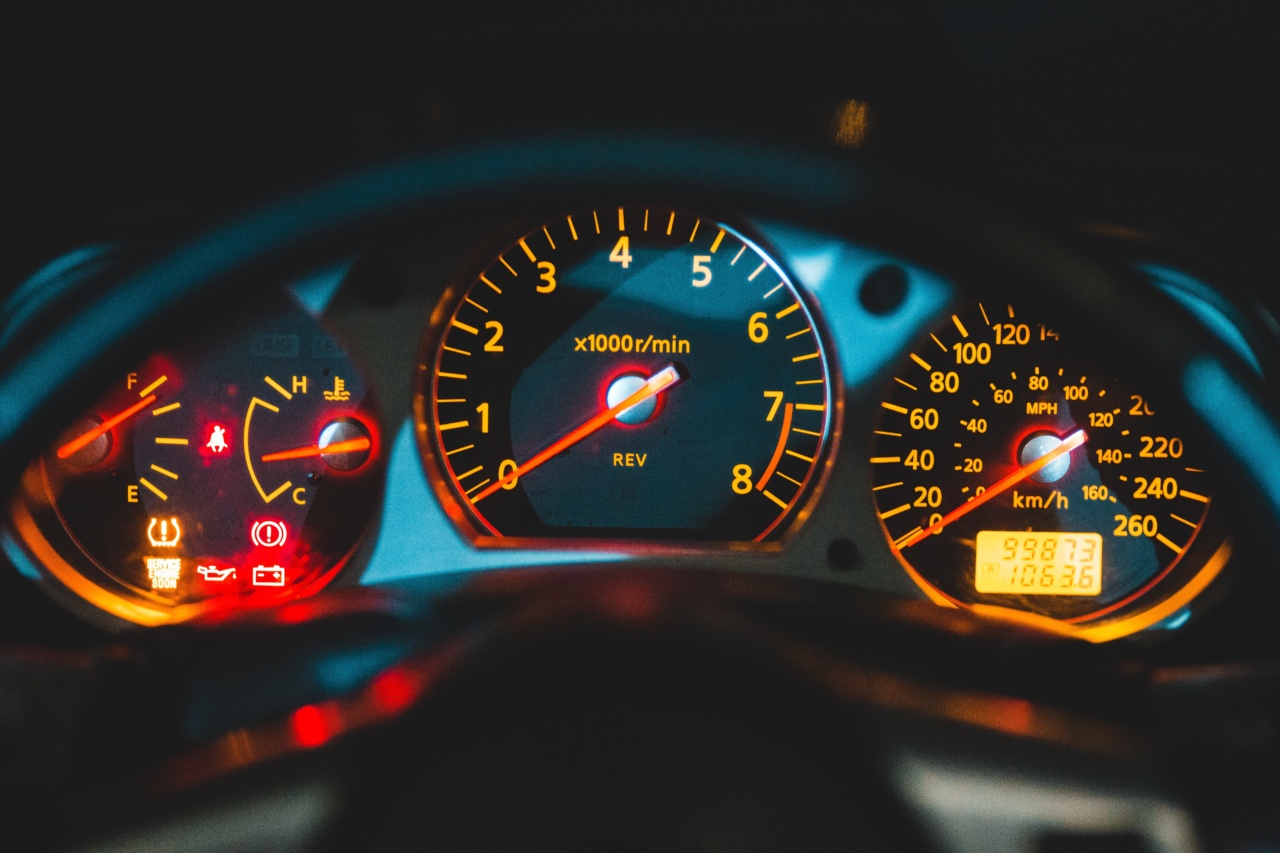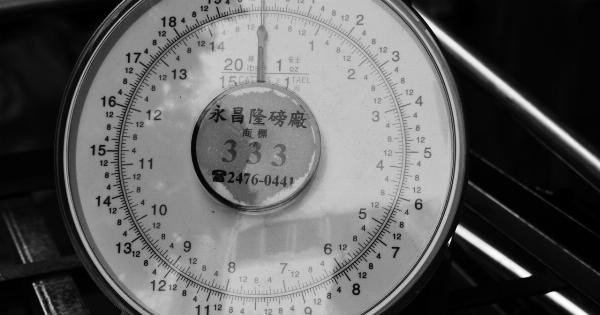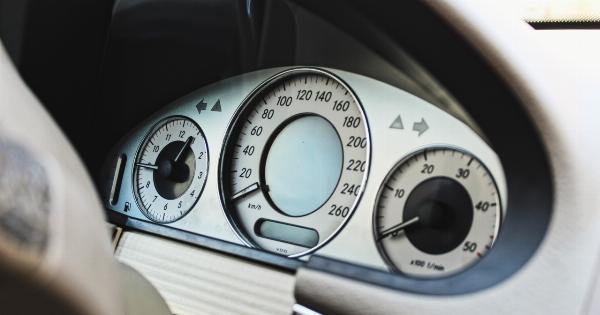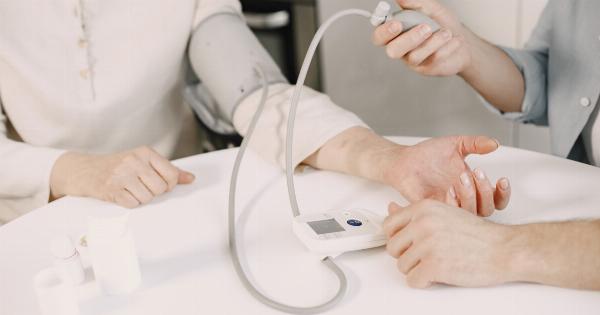If you’re working with machinery, HVAC systems, or plumbing, knowing how to measure pressure is a crucial skill. It helps ensure that everything is working correctly and can alert you to potential issues before they turn into major problems.
In this step-by-step guide, we’ll walk you through the process of measuring pressure using a variety of methods.
Method 1: Using a Pressure Gauge
The most common way to measure pressure is by using a pressure gauge. Here’s how to do it:.
- Locate the pressure gauge on the equipment you want to measure.
- Remove any protective covers or plugs from the gauge.
- Attach the gauge to a pressure source by screwing it onto the valve or fitting.
- Slowly open the valve or fitting to allow pressure to enter the gauge.
- Wait a few seconds for the gauge to stabilize and then record the reading.
- Close the valve or fitting and remove the gauge.
- Replace any protective covers or plugs on the gauge.
Method 2: Using a Manometer
A manometer is another device that can be used to measure pressure. It works by comparing the pressure in one system to a reference pressure in another system. Here’s how to use a manometer:.
- Fill the manometer with liquid, such as water or oil.
- Connect one end of the manometer to a pressure source and the other end to a reference pressure source, usually the atmosphere.
- Wait for the liquid in the manometer to settle and then measure the distance between the two levels of liquid using a ruler.
- Use a conversion table to convert the distance measurement to pressure units, such as psi or kPa.
Method 3: Using a Pressure Transducer
A pressure transducer is an electronic device that converts pressure into an electrical signal. Here’s how to use a pressure transducer:.
- Connect the transducer to a power source, such as a battery or electrical outlet.
- Attach the transducer to the equipment you want to measure using a pressure fitting or gauge adapter.
- Turn on the power to the transducer.
- Wait for the transducer to stabilize and then record the electrical signal output.
- Convert the electrical signal to pressure units using a conversion table or calculator.
Method 4: Using a Pressure Sensor
A pressure sensor is similar to a pressure transducer in that it converts pressure into an electrical signal. The difference is that a pressure sensor is typically smaller and more precise, making it ideal for measuring low-pressure systems.
Here’s how to use a pressure sensor:.
- Connect the sensor to a power source, such as a battery or electrical outlet.
- Attach the sensor to the equipment you want to measure using a pressure fitting or gauge adapter.
- Turn on the power to the sensor.
- Wait for the sensor to stabilize and then record the electrical signal output.
- Convert the electrical signal to pressure units using a conversion table or calculator.
Method 5: Using a Pressure Recorder
A pressure recorder is a device that records pressure over time. It can be used to track pressure changes in a system or to monitor pressure during a specific event. Here’s how to use a pressure recorder:.
- Connect the recorder to a power source, such as a battery or electrical outlet.
- Attach the recorder to the equipment you want to measure using a pressure fitting or gauge adapter.
- Set the recording interval, which determines how often the recorder will take a measurement.
- Turn on the power to the recorder.
- Wait for the recorder to finish recording and then retrieve the data.
- Analyze the recorded data to determine pressure fluctuations or changes over time.
Method 6: Using a Vacuum Gauge
A vacuum gauge is a device that measures the pressure inside a sealed container or system. It’s commonly used in HVAC systems to measure the pressure of refrigerant lines. Here’s how to use a vacuum gauge:.
- Locate the vacuum gauge on the equipment you want to measure.
- Connect the gauge to the refrigerant line using a valve or fitting.
- Turn on the vacuum pump to create a vacuum in the system.
- Wait for the vacuum to stabilize and then record the reading on the gauge.
- Shut off the vacuum pump and disconnect the gauge from the fitting.
Method 7: Using a Barometer
A barometer is a device that measures atmospheric pressure. It can be used to determine changes in weather patterns or to calibrate other pressure measuring devices. Here’s how to use a barometer:.
- Locate the barometer in a stationary location that’s not subject to direct sunlight or wind.
- Adjust the barometer using the set screw so that the pointer aligns with the reference index.
- Record the pressure reading on the barometer using the pointer or digital display.
Method 8: Using a Pressure Calibrator
A pressure calibrator is a device that measures and generates pressure. It’s commonly used to calibrate other pressure measuring devices. Here’s how to use a pressure calibrator:.
- Connect the calibrator to a power source, such as a battery or electrical outlet.
- Attach the calibrator to the equipment you want to calibrate using a pressure fitting or gauge adapter.
- Turn on the power to the calibrator.
- Adjust the pressure output on the calibrator to match the pressure reading on the device you want to calibrate.
- Verify the calibration by comparing the readings on the device you’re calibrating to the readings on the calibrator.
Method 9: Using a Pitot Tube
A pitot tube is a device that measures fluid velocity by measuring the pressure difference between two points in a fluid flow. It’s commonly used in fluid mechanics to measure the velocity of air or water. Here’s how to use a pitot tube:.
- Connect the pitot tube to a manometer or other pressure measuring device.
- Insert the pitot tube into the fluid flow so that the opening is facing directly into the flow.
- Wait for the pressure reading on the device to stabilize and then record the reading.
- Use a conversion table to convert the pressure reading to fluid velocity units, such as feet per second or meters per second.
Method 10: Using a Sound Speed Sensor
A sound speed sensor is a device that measures the speed of sound in a fluid or gas. It’s commonly used to measure the density and pressure of the fluid or gas. Here’s how to use a sound speed sensor:.
- Connect the sound speed sensor to a power source, such as a battery or electrical outlet.
- Attach the sound speed sensor to the equipment you want to measure using a pressure fitting or gauge adapter.
- Turn on the power to the sound speed sensor.
- Record the speed of sound measurement on the sensor display.
- Use a conversion table to convert the speed of sound measurement to pressure units, such as psi or kPa.
Conclusion
Measuring pressure is a crucial skill for anyone working with machinery, HVAC systems, or plumbing.
Whether you’re using a pressure gauge, manometer, pressure transducer, pressure sensor, pressure recorder, vacuum gauge, barometer, pressure calibrator, pitot tube, or sound speed sensor, it’s essential to follow the proper steps and use the appropriate device for the job. By following this step-by-step guide, you’ll be able to measure pressure accurately and efficiently, keeping your equipment running smoothly and avoiding potential problems.




























